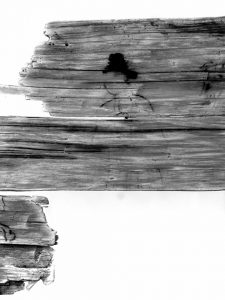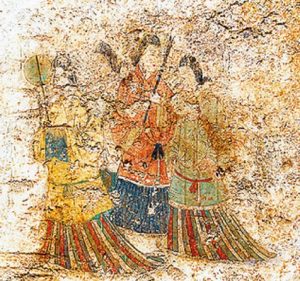Two ink paintings were recently found in Japan. The artwork is dated to between the Asuka Period (6th-8th century AD) and Nara Period (early to late 8th century AD).

The first painting was discovered in the Takamatsuzuka Tomb in Asuka village, Nara Prefecture. It consists of a richly coloured wall painting. The tomb is believed to have been created between the late 7th century and the early 8h century. The second discovery was made in the Aoyayokogi ruins in Tottori. It consists of black “sumi” ink on a wooden panel. Five fragments of the panel were put together, revealing six people, all apparently women. The complete panel would be 70.5 cm long, 15.5 cm wide and 6 mm thick. Traces of carbonization on the back of the panel indicate that it was burnt in a fire, broken into pieces and thrown away.

Experts noted the similarities between the art in both finds. The panel painting was similar to wall paintings drawn in the ancient kingdom of Goguryeo, which ruled the area from north-eastern China to the northern part of the Korean Peninsula, as well as artwork from China’s Tang Dynasty (7th-10th century AD).

(after Asahi Shimbun & Tottori Prefectural Archaeological Center)